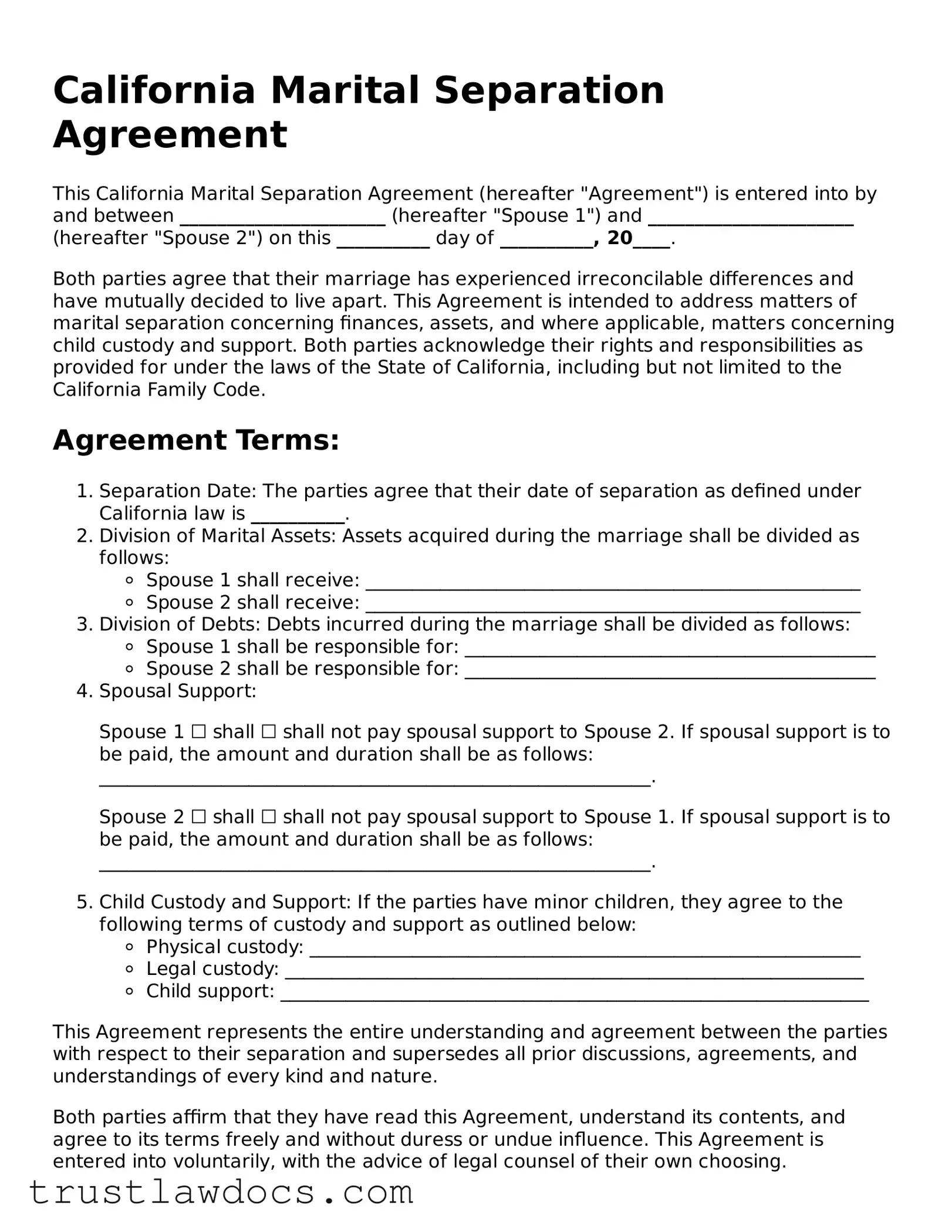What is a Marital Separation Agreement in California?
A Marital Separation Agreement in California is a legal document that outlines the terms by which a married couple agrees to live separately. It covers important aspects such as division of property, debts, alimony, child support, and custody arrangements. This agreement can be filed with the court and, once approved, becomes a binding part of the final divorce decree.
Do I need a lawyer to create a Marital Separation Agreement?
While it is not required to have a lawyer create a Marital Separation Agreement in California, obtaining legal advice is highly recommended. A lawyer can ensure that the agreement complies with California law and adequately protects your interests. However, couples may choose to draft their own agreement if they can reach a mutual understanding on all matters.
How can a Marital Separation Agreement be enforced?
Once a Marital Separation Agreement is filed with the court and approved, it becomes legally binding. If one party fails to comply with the terms, the other party can file a motion with the court to enforce the agreement. The court may then take various actions to ensure compliance, such as issuing fines or modifying the original agreement.
Can the Marital Separation Agreement be modified?
Yes, both parties can agree to modify the Marital Separation Agreement. Any changes must be made in writing and filed with the court. Additionally, if circumstances significantly change for one party (e.g., income, relocation, etc.), that party may petition the court for a modification of the agreement's terms.
What happens if we reconcile after signing a Marital Separation Agreement?
If a couple decides to reconcile after signing a Marital Separation Agreement in California, they have the option to nullify the agreement. This is typically done by filing a request with the court to dismiss the separation case or by drafting a new agreement that revokes the separation arrangement.
Is a Marital Separation Agreement the same as a divorce in California?
No, a Marital Separation Agreement is not the same as a divorce in California. The agreement is a step that couples can take if they are considering divorce or wish to live separately without officially ending their marriage. A divorce, on the other hand, legally dissolves the marriage. However, the terms of a Marital Separation Agreement can be carried over into the final divorce settlement.
Are there any tax implications to consider when drafting a Marital Separation Agreement?
Yes, there can be tax implications to consider when drafting a Marital Separation Agreement. For example, decisions about alimony, the division of assets, and child support can have significant tax consequences for both parties. It's important to consult with a tax advisor or attorney who can help you understand and plan for any potential tax effects of your agreement.
